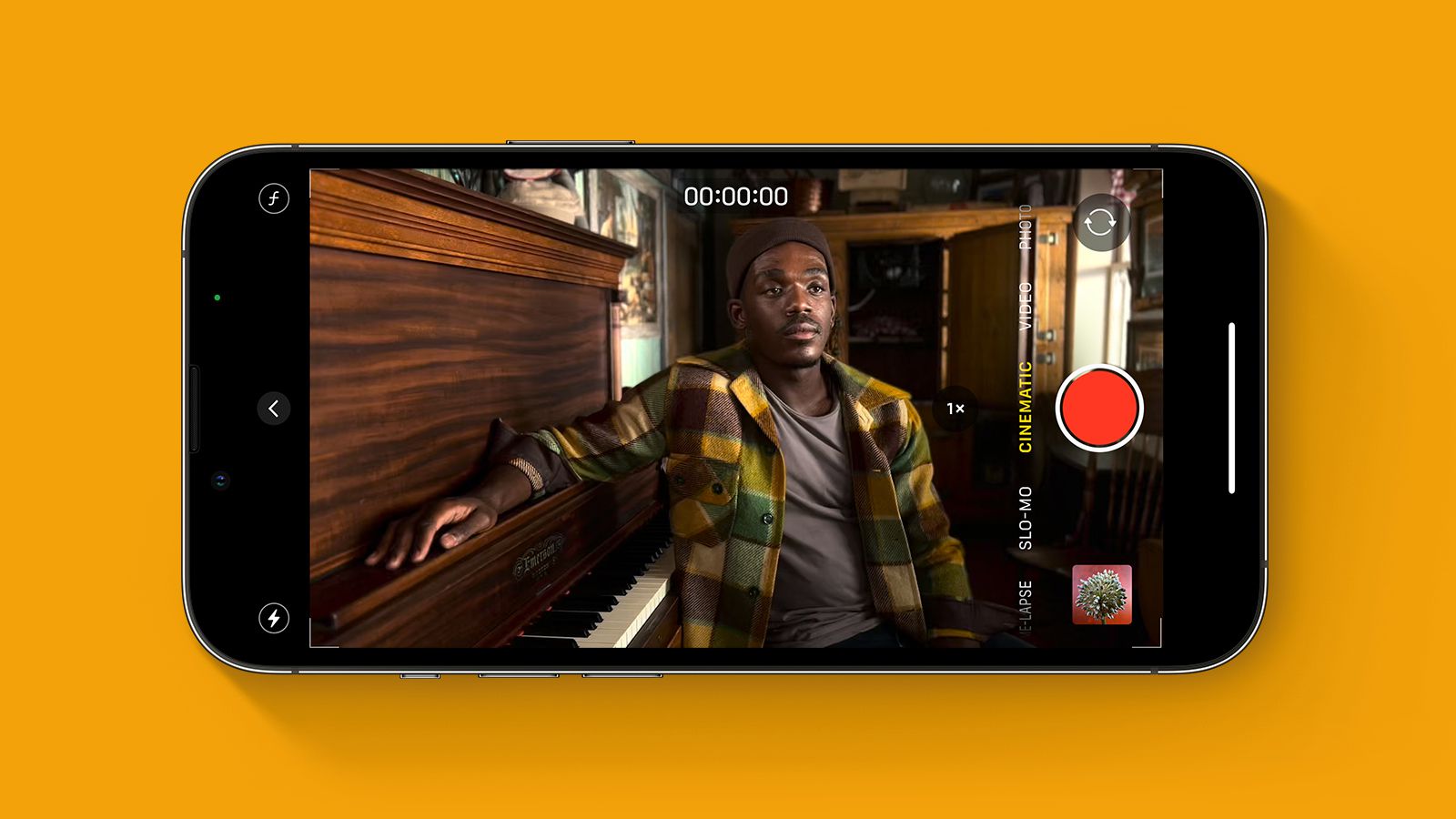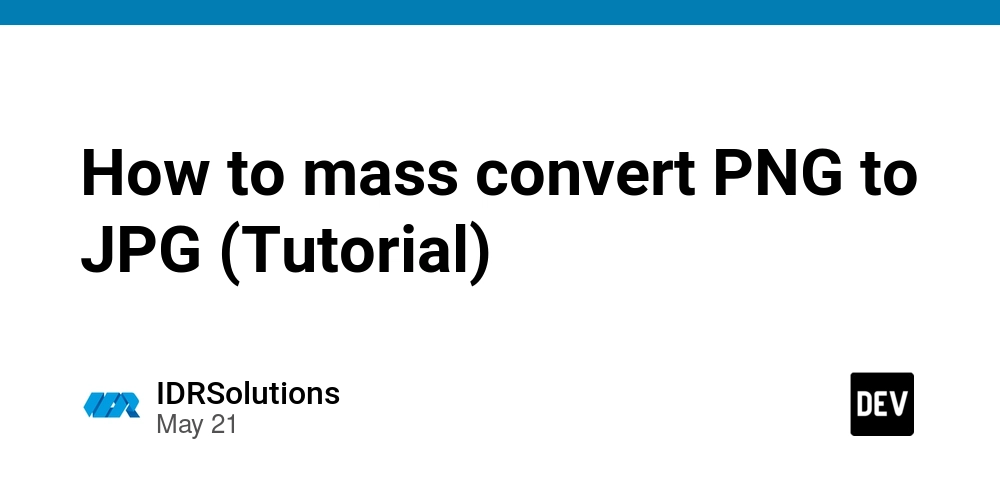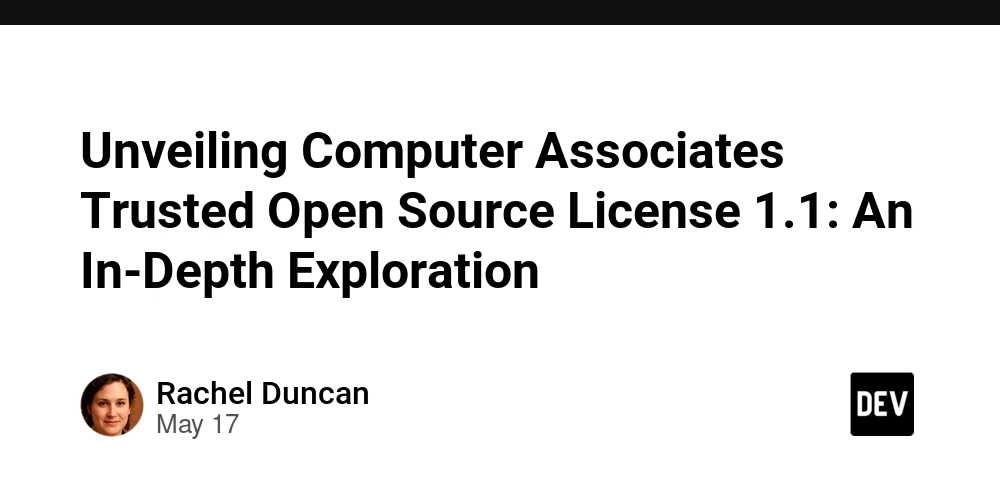The Complete MCP Guide for Developers(2025 Edition)
The Model Context Protocol (MCP) is rapidly becoming the "USB-C" of AI integration—a universal standard that's transforming how we build intelligent applications. If you're a developer who's been watching the AI space evolve, MCP represents a pivotal shift from fragmented, custom integrations to standardized, interoperable AI tooling. This comprehensive guide will take you from MCP fundamentals to practical implementation, giving you everything you need to understand and leverage this emerging protocol in 2025. What's New in MCP 2025: The Protocol Matures Just as USB-C transformed device connectivity, MCP 2025 represents the protocol's evolution from promising standard to enterprise-ready infrastructure. The ecosystem has matured dramatically, with major platforms adopting MCP as their integration backbone and security considerations taking center stage. The 2025 MCP Landscape The MCP ecosystem has reached a critical inflection point in 2025. Production deployments have scaled significantly, with enterprise adoption driving new requirements for security, authentication, and remote deployment capabilities. This growth has revealed both opportunities and challenges that the 2025 specification addresses head-on. Key 2025 Developments: Enterprise Platform Adoption: Major AI platforms now support MCP natively Security Maturation: New authentication frameworks and security standards Deployment Evolution: Remote MCP servers becoming the enterprise standard Ecosystem Growth: Thousands of production MCP server deployments Platform Integration Updates Major AI platforms have embraced MCP as their standard integration layer: Claude Ecosystem: Enhanced integration across Desktop, Code, and API platforms Enterprise AI Platforms: Growing adoption in ChatGPT Enterprise and similar services Development Tools: Native MCP support in major development environments Enterprise Partnerships: Integration with platforms like Atlassian and Docker Note: Specific platform adoption details vary by vendor and should be verified with current documentation. 2025 Specification Updates OAuth 2.1 Authentication Framework The most significant 2025 update is the adoption of OAuth 2.1 as the standard authentication mechanism, replacing previous token-based approaches: // OAuth 2.1 Authentication Flow for MCP Servers class MCPAuthError extends Error { constructor(message, code = 'AUTH_ERROR') { super(message); this.name = 'MCPAuthError'; this.code = code; } } class MCPOAuthServer { constructor(config) { this.validateConfig(config); this.clientId = config.clientId; this.clientSecret = config.clientSecret; this.authServer = config.authorizationServer; } validateConfig(config) { const required = ['clientId', 'clientSecret', 'authorizationServer']; for (const field of required) { if (!config[field] || typeof config[field] !== 'string') { throw new MCPAuthError(`Missing or invalid ${field}`); } } } isValidURL(url) { try { const parsed = new URL(url); return ['http:', 'https:'].includes(parsed.protocol); } catch { return false; } } // Exchange authorization code for access token async authenticateClient(authCode, redirectUri) { // Comprehensive input validation if (!authCode || typeof authCode !== 'string' || authCode.length { params.append(key, String(value)); }); try { const response = await fetch(`${this.authServer}/oauth/token`, { method: 'POST', headers: { 'Content-Type': 'application/x-www-form-urlencoded', 'Accept': 'application/json', 'User-Agent': 'MCP-Server/2.0.0' }, body: params.toString(), timeout: 10000 // 10 second timeout }); if (!response.ok) { const errorData = await response.json().catch(() => ({})); throw new MCPAuthError( `Token exchange failed: ${errorData.error || response.statusText}`, 'TOKEN_EXCHANGE_FAILED' ); } const tokenData = await response.json(); // Validate token response if (!tokenData.access_token) { throw new MCPAuthError('Invalid token response', 'INVALID_TOKEN_RESPONSE'); } return tokenData; } catch (error) { if (error instanceof MCPAuthError) { throw error; } throw new MCPAuthError(`Authentication failed: ${error.message}`, 'AUTH_FAILED'); } } } Enhanced Transport Layer The new Streamable HTTP transport provides better performance and reliability than the previous HTTP+SSE implementation: // Streamable HTTP Transport Implementation import { StreamableHTTPTransport } from '@modelcontextprotocol/sdk/transport/streamable-http.js'; class ModernMCPServer { constructor() { this.server = new Server( { name: 'modern-server', version: '2.0.0' }, { c

The Model Context Protocol (MCP) is rapidly becoming the "USB-C" of AI integration—a universal standard that's transforming how we build intelligent applications. If you're a developer who's been watching the AI space evolve, MCP represents a pivotal shift from fragmented, custom integrations to standardized, interoperable AI tooling.
This comprehensive guide will take you from MCP fundamentals to practical implementation, giving you everything you need to understand and leverage this emerging protocol in 2025.
What's New in MCP 2025: The Protocol Matures
Just as USB-C transformed device connectivity, MCP 2025 represents the protocol's evolution from promising standard to enterprise-ready infrastructure. The ecosystem has matured dramatically, with major platforms adopting MCP as their integration backbone and security considerations taking center stage.
The 2025 MCP Landscape
The MCP ecosystem has reached a critical inflection point in 2025. Production deployments have scaled significantly, with enterprise adoption driving new requirements for security, authentication, and remote deployment capabilities. This growth has revealed both opportunities and challenges that the 2025 specification addresses head-on.
Key 2025 Developments:
- Enterprise Platform Adoption: Major AI platforms now support MCP natively
- Security Maturation: New authentication frameworks and security standards
- Deployment Evolution: Remote MCP servers becoming the enterprise standard
- Ecosystem Growth: Thousands of production MCP server deployments
Platform Integration Updates
Major AI platforms have embraced MCP as their standard integration layer:
- Claude Ecosystem: Enhanced integration across Desktop, Code, and API platforms
- Enterprise AI Platforms: Growing adoption in ChatGPT Enterprise and similar services
- Development Tools: Native MCP support in major development environments
- Enterprise Partnerships: Integration with platforms like Atlassian and Docker
Note: Specific platform adoption details vary by vendor and should be verified with current documentation.
2025 Specification Updates
OAuth 2.1 Authentication Framework
The most significant 2025 update is the adoption of OAuth 2.1 as the standard authentication mechanism, replacing previous token-based approaches:
// OAuth 2.1 Authentication Flow for MCP Servers
class MCPAuthError extends Error {
constructor(message, code = 'AUTH_ERROR') {
super(message);
this.name = 'MCPAuthError';
this.code = code;
}
}
class MCPOAuthServer {
constructor(config) {
this.validateConfig(config);
this.clientId = config.clientId;
this.clientSecret = config.clientSecret;
this.authServer = config.authorizationServer;
}
validateConfig(config) {
const required = ['clientId', 'clientSecret', 'authorizationServer'];
for (const field of required) {
if (!config[field] || typeof config[field] !== 'string') {
throw new MCPAuthError(`Missing or invalid ${field}`);
}
}
}
isValidURL(url) {
try {
const parsed = new URL(url);
return ['http:', 'https:'].includes(parsed.protocol);
} catch {
return false;
}
}
// Exchange authorization code for access token
async authenticateClient(authCode, redirectUri) {
// Comprehensive input validation
if (!authCode || typeof authCode !== 'string' || authCode.length < 10) {
throw new MCPAuthError('Invalid authorization code format', 'INVALID_CODE');
}
if (!redirectUri || !this.isValidURL(redirectUri)) {
throw new MCPAuthError('Invalid redirect URI', 'INVALID_REDIRECT');
}
const tokenRequest = {
grant_type: 'authorization_code',
code: authCode,
redirect_uri: redirectUri,
client_id: this.clientId,
client_secret: this.clientSecret
};
// Proper URLSearchParams usage
const params = new URLSearchParams();
Object.entries(tokenRequest).forEach(([key, value]) => {
params.append(key, String(value));
});
try {
const response = await fetch(`${this.authServer}/oauth/token`, {
method: 'POST',
headers: {
'Content-Type': 'application/x-www-form-urlencoded',
'Accept': 'application/json',
'User-Agent': 'MCP-Server/2.0.0'
},
body: params.toString(),
timeout: 10000 // 10 second timeout
});
if (!response.ok) {
const errorData = await response.json().catch(() => ({}));
throw new MCPAuthError(
`Token exchange failed: ${errorData.error || response.statusText}`,
'TOKEN_EXCHANGE_FAILED'
);
}
const tokenData = await response.json();
// Validate token response
if (!tokenData.access_token) {
throw new MCPAuthError('Invalid token response', 'INVALID_TOKEN_RESPONSE');
}
return tokenData;
} catch (error) {
if (error instanceof MCPAuthError) {
throw error;
}
throw new MCPAuthError(`Authentication failed: ${error.message}`, 'AUTH_FAILED');
}
}
}
Enhanced Transport Layer
The new Streamable HTTP transport provides better performance and reliability than the previous HTTP+SSE implementation:
// Streamable HTTP Transport Implementation
import { StreamableHTTPTransport } from '@modelcontextprotocol/sdk/transport/streamable-http.js';
class ModernMCPServer {
constructor() {
this.server = new Server(
{ name: 'modern-server', version: '2.0.0' },
{
capabilities: {
tools: {},
streaming: true,
authentication: { oauth2: true }
}
}
);
}
setupTransport() {
return new StreamableHTTPTransport({
port: process.env.PORT || 3000,
path: '/mcp',
cors: {
origin: process.env.ALLOWED_ORIGINS?.split(','),
credentials: true
},
authentication: {
strategy: 'oauth2',
requiredScopes: ['mcp:tools', 'mcp:resources']
}
});
}
}
What is MCP and Why Should You Care?
The Model Context Protocol is an open standard designed to standardize how AI applications—especially those using large language models (LLMs)—interact with external tools, data sources, and APIs. Think of it as a state management layer specifically designed for AI agents, enabling persistent, structured context exchange between AI models and their operational environments.
The Problem MCP Solves
Before MCP, every AI integration was a snowflake:
- Custom connectors for every tool, database, or API
- No standardization across different AI platforms
- Fragmented context management leading to inconsistent agent behavior
- Security vulnerabilities from ad-hoc integrations
- Scalability nightmares when managing multiple AI tools
MCP addresses these challenges by providing a unified protocol for AI-to-tool communication, similar to how HTTP standardized web communication or how TCP/IP standardized network protocols.
Key Benefits for Developers
- Standardization: Write once, integrate everywhere
- Scalability: Modular design supports complex AI deployments
- Persistent Context: Enables stateful, multi-turn AI interactions
- Interoperability: Open standard with growing ecosystem support
- Security: Built-in authentication and access controls
Security in MCP 2025: Critical Considerations
The rapid growth of the MCP ecosystem has revealed significant security challenges that developers must address. Understanding and implementing proper security measures is crucial for production MCP deployments.
The Security Challenge
As MCP adoption has grown, security researchers have identified common vulnerability patterns in deployed servers. While specific statistics vary by deployment context, common issues include:
- Command Injection Vulnerabilities: Improper input validation in tool implementations
- Insufficient Input Validation: Lack of sanitization for user-provided parameters
- Privilege Escalation: Misconfigured tool permissions allowing unauthorized access
- Authentication Implementation Flaws: Incorrect OAuth 2.1 implementations
- Resource Exhaustion: Lack of proper rate limiting and resource management
Note: Security vulnerability rates should be verified through current security research and audit reports.
Command Injection Prevention
Command injection is a critical concern for MCP servers that execute system commands:
// ❌ VULNERABLE: Direct command execution
async function vulnerableExecute(command) {
const { exec } = require('child_process');
return new Promise((resolve, reject) => {
exec(command, (error, stdout) => {
if (error) reject(error);
else resolve(stdout);
});
});
}
// ✅ SECURE: Parameterized command execution
class SecurityError extends Error {
constructor(message) {
super(message);
this.name = 'SecurityError';
}
}
class SecureCommandExecutor {
constructor() {
// Strict allowlist approach
this.allowedCommands = new Map([
['git_status', {
command: ['git', 'status', '--porcelain'],
allowedArgs: ['--help', '--verbose']
}],
['list_files', {
command: ['ls', '-la'],
allowedArgs: []
}],
['disk_usage', {
command: ['df', '-h'],
allowedArgs: []
}]
]);
}
async executeCommand(commandName, args = []) {
const commandConfig = this.allowedCommands.get(commandName);
if (!commandConfig) {
throw new SecurityError(`Command '${commandName}' not allowed`);
}
// Strict argument validation
const validatedArgs = this.validateArgs(args, commandConfig.allowedArgs);
const fullCommand = [...commandConfig.command, ...validatedArgs];
return await this.executeSecurely(fullCommand);
}
validateArgs(args, allowedArgs) {
const validatedArgs = [];
for (const arg of args) {
if (typeof arg !== 'string') {
throw new SecurityError('All arguments must be strings');
}
// Comprehensive sanitization
if (this.containsDangerousCharacters(arg)) {
throw new SecurityError('Argument contains dangerous characters');
}
// Allowlist validation
if (!allowedArgs.includes(arg)) {
throw new SecurityError(`Argument '${arg}' not allowed`);
}
validatedArgs.push(arg);
}
return validatedArgs;
}
containsDangerousCharacters(str) {
// Comprehensive dangerous character detection
const dangerousPatterns = [
/[;&|`$()><\\*?[\]{}]/, // Shell metacharacters
/[\n\r\t\f\v\0]/, // Control characters
/["']/, // Quote characters
/\.\.|\/..\//, // Path traversal
/^-/, // Option injection
];
return dangerousPatterns.some(pattern => pattern.test(str));
}
async executeSecurely(command) {
const { spawn } = require('child_process');
return new Promise((resolve, reject) => {
// Secure process execution
const process = spawn(command[0], command.slice(1), {
stdio: ['ignore', 'pipe', 'pipe'],
timeout: 30000,
detached: false,
uid: 1001, // Non-root user
gid: 1001, // Non-root group
env: {}, // Empty environment
cwd: '/tmp', // Safe working directory
shell: false // CRITICAL: Never use shell
});
let stdout = '';
let stderr = '';
process.stdout.on('data', (data) => {
stdout += data;
// Prevent memory exhaustion
if (stdout.length > 1024 * 1024) { // 1MB limit
process.kill('SIGTERM');
reject(new SecurityError('Output too large'));
}
});
process.stderr.on('data', (data) => {
stderr += data;
});
process.on('close', (code, signal) => {
if (signal) {
reject(new SecurityError(`Process terminated by signal: ${signal}`));
} else if (code === 0) {
resolve({ stdout, stderr, success: true });
} else {
reject(new SecurityError(`Command failed with code ${code}: ${stderr}`));
}
});
process.on('error', (error) => {
reject(new SecurityError(`Process error: ${error.message}`));
});
// Ensure process cleanup
setTimeout(() => {
if (!process.killed) {
process.kill('SIGTERM');
reject(new SecurityError('Process timeout'));
}
}, 30000);
});
}
}
Input Validation Framework
Implement comprehensive input validation for all tool parameters:
class ValidationError extends Error {
constructor(message) {
super(message);
this.name = 'ValidationError';
}
}
class MCPInputValidator {
constructor() {
this.validators = new Map();
this.setupCommonValidators();
}
setupCommonValidators() {
this.validators.set('string', this.validateString);
this.validators.set('integer', this.validateInteger);
this.validators.set('email', this.validateEmail);
this.validators.set('url', this.validateURL);
}
validateString(value, constraints = {}) {
if (typeof value !== 'string') {
throw new ValidationError('Value must be a string');
}
if (constraints.maxLength && value.length > constraints.maxLength) {
throw new ValidationError(`String exceeds maximum length`);
}
// Check for potential injection attempts
const dangerousPatterns = [
/[<>]/g, // HTML/XML injection
/['"`;]/g, // SQL injection
/\$\{|\$\(/g, // Template injection
/eval\(|exec\(/g, // Code injection
/javascript:/gi // XSS attempts
];
for (const pattern of dangerousPatterns) {
if (pattern.test(value)) {
throw new SecurityError('Input contains potentially dangerous content');
}
}
return value;
}
async validateToolCall(toolName, args, schema) {
const tool = schema.tools.find(t => t.name === toolName);
if (!tool) {
throw new ValidationError(`Unknown tool: ${toolName}`);
}
const validatedArgs = {};
for (const [paramName, paramConfig] of Object.entries(tool.parameters)) {
const value = args[paramName];
if (paramConfig.required && value === undefined) {
throw new ValidationError(`Missing required parameter: ${paramName}`);
}
if (value !== undefined) {
const validator = this.validators.get(paramConfig.type);
if (validator) {
validatedArgs[paramName] = validator(value, paramConfig.constraints);
}
}
}
return validatedArgs;
}
}
MCP Architecture: Understanding the Components
MCP introduces a layered, modular architecture with several key components:
Core Components
MCP Clients
- Interfaces (chatbots, apps, APIs) that initiate protocol requests
- Submit contextual metadata and handle responses
- Examples: Claude Desktop, custom AI applications
MCP Servers
- Middleware that exposes tools, resources, and capabilities
- Manages context, enforces access controls, and executes tool logic
- Examples: Database connectors, API wrappers, file system servers
MCP Hosts
- AI applications that require access to external resources
- Orchestrate communication between clients and servers
- Handle session management and context assembly
Transport Layer
- Handles communication between components
- Supports HTTP, Server-Sent Events (SSE), and other protocols
- Manages connection lifecycle and error handling
Protocol Flow
┌─────────────┐ ┌─────────────┐ ┌─────────────┐
│ Client │◄──►│ Host │◄──►│ Server │
│ │ │ │ │ │
│ (Interface) │ │ (AI Agent) │ │ (Tools/Data)│
└─────────────┘ └─────────────┘ └─────────────┘
- Discovery: Client requests available tools from server
- Context Assembly: Host gathers relevant context and tools
- Agent Processing: AI agent reasons over available context and tools
- Tool Invocation: Host executes tool calls based on agent output
- Response: Results flow back through the chain
Local vs Remote MCP Servers: Deployment Strategies
The MCP ecosystem now supports both local and remote server deployments. Understanding when to use each approach is crucial for building effective MCP implementations.
Local MCP Servers
Local servers run on the same machine as the MCP client, using direct process communication.
When to Use Local Servers:
- High security requirements (data never leaves local environment)
- Low latency needs (direct process communication)
- Development and testing scenarios
- Offline operation requirements
- Resource-intensive operations needing local compute
Local Server Implementation
// Local MCP Server with Stdio Transport
import { Server } from '@modelcontextprotocol/sdk/server/index.js';
import { StdioServerTransport } from '@modelcontextprotocol/sdk/server/stdio.js';
class LocalFileSystemServer {
constructor() {
this.server = new Server(
{ name: 'local-filesystem', version: '2.0.0' },
{
capabilities: {
tools: {},
resources: {},
local_execution: true
}
}
);
this.setupLocalTools();
}
setupLocalTools() {
this.server.setRequestHandler('tools.list', async () => ({
tools: [
{
name: 'read_local_file',
description: 'Read file from local filesystem',
parameters: {
path: {
type: 'string',
required: true,
constraints: {
pattern: '^/[^\\0]*$', // Unix path validation
maxLength: 4096
}
}
}
}
]
}));
}
async run() {
const transport = new StdioServerTransport();
await this.server.connect(transport);
console.error('Local MCP server running...');
}
}
Remote MCP Servers
Remote servers run as independent services, accessible over network protocols.
When to Use Remote Servers:
- Multiple client support
- Centralized management and updates
- Resource pooling across users
- Enterprise integration requirements
- Multi-tenant deployments
Remote Server Implementation
// Remote MCP Server with HTTP Transport
import { Server } from '@modelcontextprotocol/sdk/server/index.js';
import { StreamableHTTPTransport } from '@modelcontextprotocol/sdk/transport/streamable-http.js';
class RemoteDatabaseServer {
constructor() {
this.server = new Server(
{ name: 'remote-database', version: '2.0.0' },
{
capabilities: {
tools: {},
streaming: true,
multi_tenant: true,
remote_execution: true
}
}
);
this.setupRemoteTools();
this.setupAuthentication();
}
setupRemoteTools() {
this.server.setRequestHandler('tools.call', async (request) => {
const userContext = await this.authenticateUser(request);
const { name, arguments: args } = request.params;
// Validate user permissions
await this.validateUserAccess(userContext.userId, name, args);
// Execute with monitoring
return await this.executeToolWithMonitoring(name, args, userContext);
});
}
async run() {
const transport = new StreamableHTTPTransport({
port: process.env.PORT || 3000,
path: '/mcp',
authentication: {
strategy: 'oauth2',
config: {
authorizationServer: process.env.AUTH_SERVER_URL,
clientId: process.env.CLIENT_ID,
requiredScopes: ['mcp:database']
}
}
});
await this.server.connect(transport);
console.log(`Remote MCP server running on port ${process.env.PORT || 3000}`);
}
}
How MCP Actually Works: A Technical Deep Dive
Understanding Agent Driver vs. Agent Logic
One of the most important concepts in MCP is the separation between the Agent Driver (host application logic) and Agent Logic (the LLM/AI model itself).
Agent Logic (LLM/Agent):
- Receives structured context including available tools and their schemas
- Reasons about which tools to use based on the current task
- Outputs structured responses indicating tool calls or final answers
- Does NOT need to understand MCP protocol details
Agent Driver (Host/Application):
- Assembles context from MCP servers according to protocol
- Parses agent outputs to determine next actions
- Handles tool invocation through MCP protocol
- Manages sessions, authentication, and error handling
Tool Discovery and Invocation
Here's how a typical MCP interaction works:
1. Tool Discovery
Request:
{
"jsonrpc": "2.0",
"id": 1,
"method": "tools.list"
}
Response:
{
"jsonrpc": "2.0",
"id": 1,
"result": [
{
"name": "get_user",
"description": "Fetches user information by user_id",
"parameters": {
"user_id": { "type": "string", "required": true }
}
},
{
"name": "send_email",
"description": "Sends email to specified recipient",
"parameters": {
"to": { "type": "string", "required": true },
"subject": { "type": "string", "required": true },
"body": { "type": "string", "required": true }
}
}
]
}
2. Tool Invocation
Request:
{
"jsonrpc": "2.0",
"id": 2,
"method": "tools.call",
"tool": "get_user",
"args": { "user_id": "123" }
}
Response:
{
"jsonrpc": "2.0",
"id": 2,
"result": {
"user_id": "123",
"name": "John Doe",
"email": "john@example.com",
"status": "active"
}
}
Context Management and Sessions
MCP excels at managing persistent context across multi-turn interactions. Here's what you typically need to store:
Session Data Structure:
{
userId: "user_123",
sessionId: "session_456",
context: {
conversationHistory: [...],
toolStates: {...},
userPreferences: {...},
activeWorkflow: {...}
},
metadata: {
createdAt: "2025-06-22T10:00:00Z",
lastActivity: "2025-06-22T10:30:00Z"
}
}
Building Your First MCP Server
Let's build a practical example: a simple file system MCP server with enhanced security.
Step 1: Basic Server Structure
import { Server } from '@modelcontextprotocol/sdk/server/index.js';
import { StdioServerTransport } from '@modelcontextprotocol/sdk/server/stdio.js';
import fs from 'fs/promises';
import path from 'path';
class FileSystemMCPServer {
constructor() {
this.server = new Server(
{ name: 'filesystem-server', version: '2.0.0' },
{ capabilities: { tools: {} } }
);
this.setupTools();
this.inputValidator = new MCPInputValidator();
}
setupTools() {
// Register available tools
this.server.setRequestHandler('tools.list', async () => ({
tools: [
{
name: 'read_file',
description: 'Read contents of a file',
parameters: {
path: {
type: 'string',
required: true,
constraints: {
maxLength: 4096,
pattern: '^[a-zA-Z0-9._/-]+$'
}
}
}
},
{
name: 'write_file',
description: 'Write content to a file',
parameters: {
path: {
type: 'string',
required: true,
constraints: {
maxLength: 4096,
pattern: '^[a-zA-Z0-9._/-]+$'
}
},
content: {
type: 'string',
required: true,
constraints: {
maxLength: 1048576 // 1MB limit
}
}
}
},
{
name: 'list_directory',
description: 'List files in a directory',
parameters: {
path: {
type: 'string',
required: true,
constraints: {
maxLength: 4096,
pattern: '^[a-zA-Z0-9._/-]+$'
}
}
}
}
]
}));
// Handle tool invocations with security validation
this.server.setRequestHandler('tools.call', async (request) => {
const { name, arguments: args } = request.params;
// Validate input
const validatedArgs = await this.inputValidator.validateToolCall(
name,
args,
await this.server.request('tools.list')
);
switch (name) {
case 'read_file':
return await this.readFile(validatedArgs.path);
case 'write_file':
return await this.writeFile(validatedArgs.path, validatedArgs.content);
case 'list_directory':
return await this.listDirectory(validatedArgs.path);
default:
throw new Error(`Unknown tool: ${name}`);
}
});
}
async readFile(filePath) {
try {
// Additional security: resolve path and check it's within allowed directory
const resolvedPath = path.resolve(filePath);
const allowedDir = path.resolve('./allowed_files');
if (!resolvedPath.startsWith(allowedDir)) {
throw new SecurityError('Access denied: path outside allowed directory');
}
const content = await fs.readFile(resolvedPath, 'utf-8');
return { content, success: true };
} catch (error) {
return { error: error.message, success: false };
}
}
async writeFile(filePath, content) {
try {
const resolvedPath = path.resolve(filePath);
const allowedDir = path.resolve('./allowed_files');
if (!resolvedPath.startsWith(allowedDir)) {
throw new SecurityError('Access denied: path outside allowed directory');
}
await fs.writeFile(resolvedPath, content, 'utf-8');
return { message: 'File written successfully', success: true };
} catch (error) {
return { error: error.message, success: false };
}
}
async listDirectory(dirPath) {
try {
const resolvedPath = path.resolve(dirPath);
const allowedDir = path.resolve('./allowed_files');
if (!resolvedPath.startsWith(allowedDir)) {
throw new SecurityError('Access denied: path outside allowed directory');
}
const files = await fs.readdir(resolvedPath);
return { files, success: true };
} catch (error) {
return { error: error.message, success: false };
}
}
async run() {
const transport = new StdioServerTransport();
await this.server.connect(transport);
console.error('File System MCP Server running...');
}
}
// Start the server
const server = new FileSystemMCPServer();
server.run().catch(console.error);
Step 2: Adding Session Management
For production servers, you'll want persistent session storage:
import { Redis } from 'ioredis';
class SessionManager {
constructor() {
this.redis = new Redis(process.env.REDIS_URL);
}
async getSession(sessionId) {
const data = await this.redis.get(`session:${sessionId}`);
return data ? JSON.parse(data) : null;
}
async updateSession(sessionId, context) {
await this.redis.setex(
`session:${sessionId}`,
3600, // 1 hour TTL
JSON.stringify(context)
);
}
async createSession(userId) {
const sessionId = `session_${Date.now()}_${Math.random().toString(36)}`;
const context = {
userId,
createdAt: new Date().toISOString(),
conversationHistory: [],
toolStates: {}
};
await this.updateSession(sessionId, context);
return sessionId;
}
}
Enterprise Deployment Patterns
Enterprise MCP deployments require sophisticated patterns optimized for scale, security, and reliability. Here are proven approaches from production deployments.
Containerized Deployment with Docker
# Production MCP Server Dockerfile
FROM node:18-alpine AS base
# Security: Run as non-root user
RUN addgroup -g 1001 -S mcpuser && \
adduser -S mcpuser -u 1001
WORKDIR /app
# Install dependencies
COPY package*.json ./
RUN npm ci --only=production && npm cache clean --force
# Copy application code
COPY --chown=mcpuser:mcpuser . .
# Health check endpoint
HEALTHCHECK --interval=30s --timeout=3s --start-period=5s --retries=3 \
CMD node healthcheck.js
USER mcpuser
EXPOSE 3000
CMD ["node", "server.js"]
Kubernetes Deployment
# Production Kubernetes Deployment
apiVersion: apps/v1
kind: Deployment
metadata:
name: mcp-server
namespace: mcp-production
spec:
replicas: 3
strategy:
type: RollingUpdate
rollingUpdate:
maxSurge: 1
maxUnavailable: 0
selector:
matchLabels:
app: mcp-server
template:
metadata:
labels:
app: mcp-server
annotations:
container.apparmor.security.beta.kubernetes.io/mcp-server: runtime/default
spec:
serviceAccountName: mcp-server
securityContext:
runAsNonRoot: true
runAsUser: 1001
runAsGroup: 1001
fsGroup: 1001
seccompProfile:
type: RuntimeDefault
containers:
- name: mcp-server
image: company/mcp-server:v2.0.0
ports:
- containerPort: 3000
protocol: TCP
resources:
requests:
memory: 256Mi
cpu: 100m
limits:
memory: 512Mi
cpu: 250m
securityContext:
allowPrivilegeEscalation: false
readOnlyRootFilesystem: true
runAsNonRoot: true
runAsUser: 1001
capabilities:
drop: ["ALL"]
volumeMounts:
- name: tmp-volume
mountPath: /tmp
- name: cache-volume
mountPath: /app/.cache
livenessProbe:
httpGet:
path: /health
port: 3000
initialDelaySeconds: 30
periodSeconds: 30
readinessProbe:
httpGet:
path: /ready
port: 3000
initialDelaySeconds: 5
periodSeconds: 10
env:
- name: NODE_ENV
value: production
- name: MCP_LOG_LEVEL
value: info
volumes:
- name: tmp-volume
emptyDir: {}
- name: cache-volume
emptyDir: {}
automountServiceAccountToken: false
dnsPolicy: ClusterFirst
restartPolicy: Always
MCP vs. Other Protocols: Where It Fits
Understanding how MCP compares to familiar protocols helps clarify its purpose:
| Protocol | Layer/Domain | Purpose | Limitations for AI |
|---|---|---|---|
| TCP/IP | Network transport | Reliable data transmission | Not context- or AI-aware |
| REST | Web APIs | Simple, stateless resource access | No built-in context memory |
| GraphQL | Web APIs | Flexible, client-driven queries | Lacks persistent AI context |
| gRPC | Web APIs/RPC | High-performance, typed APIs | Not designed for AI context |
| MCP | AI context exchange | Persistent, structured, multi-agent context | More complex, newer ecosystem |
MCP operates at the application context layer, not as a transport protocol. It defines how to structure, persist, and exchange context between AI agents and external systems, while potentially using HTTP, gRPC, or other protocols for actual data transport.
Storage Strategies for MCP Servers
In-Memory Storage (Development/Simple Cases)
class InMemorySessionStore {
constructor() {
this.sessions = new Map();
}
get(sessionId) {
return this.sessions.get(sessionId);
}
set(sessionId, context) {
this.sessions.set(sessionId, context);
}
}
Redis (Production/Distributed)
class RedisSessionStore {
constructor(redisUrl) {
this.redis = new Redis(redisUrl);
}
async get(sessionId) {
const data = await this.redis.get(`mcp:session:${sessionId}`);
return data ? JSON.parse(data) : null;
}
async set(sessionId, context, ttl = 3600) {
await this.redis.setex(
`mcp:session:${sessionId}`,
ttl,
JSON.stringify(context)
);
}
}
SQL with JSON (Structured + Flexible)
CREATE TABLE mcp_sessions (
session_id VARCHAR(255) PRIMARY KEY,
user_id VARCHAR(255),
context JSON,
created_at TIMESTAMP DEFAULT CURRENT_TIMESTAMP,
updated_at TIMESTAMP DEFAULT CURRENT_TIMESTAMP ON UPDATE CURRENT_TIMESTAMP
);
Advanced Security Best Practices
1. Authentication and Authorization
// Enhanced middleware for MCP server
class AuthenticationError extends Error {
constructor(message) {
super(message);
this.name = 'AuthenticationError';
}
}
class AuthorizationError extends Error {
constructor(message) {
super(message);
this.name = 'AuthorizationError';
}
}
async function authenticateRequest(request) {
const token = request.headers.authorization?.replace('Bearer ', '');
if (!token) throw new AuthenticationError('Authentication required');
const user = await verifyToken(token);
if (!user) throw new AuthenticationError('Invalid token');
return user;
}
// Tool-level permissions
async function checkToolPermissions(user, toolName) {
const permissions = await getUserPermissions(user.id);
if (!permissions.tools.includes(toolName)) {
throw new AuthorizationError(`Access denied for tool: ${toolName}`);
}
}
2. Enhanced Input Validation
function validateToolCall(toolName, args, schema) {
const tool = schema.tools.find(t => t.name === toolName);
if (!tool) throw new Error(`Unknown tool: ${toolName}`);
// Validate required parameters
for (const [param, config] of Object.entries(tool.parameters)) {
if (config.required && !(param in args)) {
throw new Error(`Missing required parameter: ${param}`);
}
}
// Type validation, sanitization, etc.
return true;
}
3. Rate Limiting
class RateLimiter {
constructor(windowMs = 60000, maxRequests = 100) {
this.windowMs = windowMs;
this.maxRequests = maxRequests;
this.requests = new Map();
}
async checkLimit(userId) {
const now = Date.now();
const userRequests = this.requests.get(userId) || [];
// Remove old requests outside window
const validRequests = userRequests.filter(
time => now - time < this.windowMs
);
if (validRequests.length >= this.maxRequests) {
throw new Error('Rate limit exceeded');
}
validRequests.push(now);
this.requests.set(userId, validRequests);
}
}
Performance Optimization and Scaling
Caching Strategies
class MCPCache {
constructor(ttl = 300000) { // 5 minutes
this.cache = new Map();
this.ttl = ttl;
}
async get(key, fetcher) {
const cached = this.cache.get(key);
if (cached && Date.now() - cached.timestamp < this.ttl) {
return cached.data;
}
const data = await fetcher();
this.cache.set(key, { data, timestamp: Date.now() });
return data;
}
}
Load Balancing Multiple Servers
class MCPServerPool {
constructor(servers) {
this.servers = servers;
this.currentIndex = 0;
}
getNextServer() {
const server = this.servers[this.currentIndex];
this.currentIndex = (this.currentIndex + 1) % this.servers.length;
return server;
}
async executeToolCall(toolName, args) {
const server = this.getNextServer();
try {
return await server.callTool(toolName, args);
} catch (error) {
// Fallback to next server if available
if (this.servers.length > 1) {
const fallbackServer = this.getNextServer();
return await fallbackServer.callTool(toolName, args);
}
throw error;
}
}
}
Testing MCP Implementations
Unit Testing Tools
import { jest } from '@jest/globals';
import { MCPTestClient } from '@modelcontextprotocol/sdk/test';
describe('FileSystem MCP Server', () => {
let testClient;
let server;
beforeEach(async () => {
server = new FileSystemMCPServer();
testClient = new MCPTestClient(server);
await testClient.connect();
});
test('should list available tools', async () => {
const response = await testClient.request('tools.list');
expect(response.tools).toHaveLength(3);
expect(response.tools[0].name).toBe('read_file');
});
test('should read file successfully', async () => {
const result = await testClient.callTool('read_file', {
path: '/tmp/test.txt'
});
expect(result.success).toBe(true);
});
});
Integration Testing
describe('MCP Integration Tests', () => {
test('should handle complete workflow', async () => {
const client = new MCPClient('http://localhost:3000/mcp');
// 1. Discover tools
const tools = await client.listTools();
expect(tools).toContain('create_user');
// 2. Execute workflow
const user = await client.callTool('create_user', {
name: 'Test User',
email: 'test@example.com'
});
const profile = await client.callTool('get_user', {
user_id: user.id
});
expect(profile.name).toBe('Test User');
});
});
Common Pitfalls and How to Avoid Them
1. Over-Engineering Context Storage
Problem: Storing every piece of information in session context
Solution: Only persist what's necessary for continuity
// ❌ Too much context
const badContext = {
fullConversationHistory: [...], // Massive array
allToolResults: {...}, // Everything ever called
userBrowsingHistory: [...], // Unnecessary data
};
// ✅ Focused context
const goodContext = {
recentMessages: messages.slice(-10), // Last 10 messages
activeWorkflow: currentWorkflow, // Current task state
userPreferences: essentialPrefs, // Only relevant prefs
};
2. Ignoring Error Handling
// ❌ Poor error handling
async function callTool(name, args) {
return await server.invoke(name, args);
}
// ✅ Robust error handling
async function callTool(name, args) {
try {
return await server.invoke(name, args);
} catch (error) {
if (error.code === 'RATE_LIMITED') {
await delay(1000);
return await server.invoke(name, args);
}
throw new MCPError(`Tool '${name}' failed: ${error.message}`, {
tool: name,
args,
originalError: error
});
}
}
3. Security Vulnerabilities
// ❌ Exposing sensitive operations
tools: [
{
name: 'execute_command',
description: 'Execute any shell command',
// This is dangerous!
}
]
// ✅ Secure, limited operations
tools: [
{
name: 'get_system_status',
description: 'Get basic system health metrics',
// Safe, read-only operation
}
]
The Future of MCP
Emerging Trends
- Standardization Across Platforms: Major AI providers are adopting MCP
- Marketplace Ecosystems: MCP server marketplaces are emerging
- Visual Development Tools: Low-code MCP server builders
- Industry Specialization: Vertical-specific MCP implementations
What This Means for Developers
- Career Opportunities: MCP expertise is becoming valuable
- Architecture Decisions: New projects should consider MCP-first design
- Skill Development: Understanding both AI and integration patterns is crucial
- Ecosystem Participation: Contributing to open-source MCP tools builds reputation
Getting Started: Your Next Steps
1. Experiment with Existing Tools
- Try Claude Desktop with MCP servers
- Explore the official MCP server repository
- Join the MCP community discussions
2. Build Your First Server
- Start with a simple file system or database connector
- Focus on one tool/capability initially
- Test with the MCP inspector tool
3. Contribute to the Ecosystem
- Open-source your MCP servers
- Document your implementations
- Share learnings with the community
4. Stay Updated
- Follow MCP specification updates
- Monitor ecosystem developments
- Engage with other MCP developers
Conclusion
The Model Context Protocol represents a fundamental shift in how we build AI-integrated applications. By providing a standardized way to manage context, tools, and persistent state, MCP enables developers to create more sophisticated, reliable, and scalable AI systems.
As a developer, understanding MCP positions you at the forefront of the AI infrastructure revolution. Whether you're building the next generation of AI-powered SaaS applications, contributing to the growing ecosystem of MCP tools, or transitioning your career toward AI infrastructure engineering, MCP provides the foundation for the future of intelligent software.
The protocol has evolved significantly in 2025, with enhanced security features, OAuth 2.1 authentication, and enterprise-ready deployment patterns. While challenges remain around security implementation and ecosystem standardization, the growing adoption by major platforms signals MCP's importance in the AI infrastructure landscape.
Start building, start experimenting, and join the community of developers who are defining how AI and traditional software systems will work together in the years to come.
Want to dive deeper? Check out the official MCP documentation and explore the growing collection of open-source MCP servers to see real-world implementations in action.























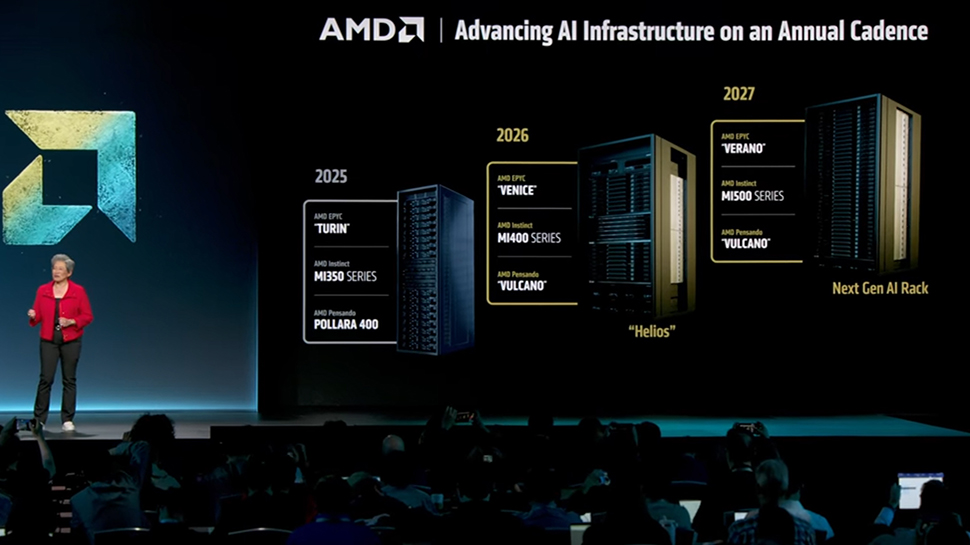





















































































































































![[The AI Show Episode 154]: AI Answers: The Future of AI Agents at Work, Building an AI Roadmap, Choosing the Right Tools, & Responsible AI Use](https://www.marketingaiinstitute.com/hubfs/ep%20154%20cover.png)
![[The AI Show Episode 153]: OpenAI Releases o3-Pro, Disney Sues Midjourney, Altman: “Gentle Singularity” Is Here, AI and Jobs & News Sites Getting Crushed by AI Search](https://www.marketingaiinstitute.com/hubfs/ep%20153%20cover.png)
























































































































![[FREE EBOOKS] The Chief AI Officer’s Handbook, Natural Language Processing with Python & Four More Best Selling Titles](https://www.javacodegeeks.com/wp-content/uploads/2012/12/jcg-logo.jpg)








































































![GrandChase tier list of the best characters available [June 2025]](https://media.pocketgamer.com/artwork/na-33057-1637756796/grandchase-ios-android-3rd-anniversary.jpg?#)




































































_Frank_Peters_Alamy.jpg?width=1280&auto=webp&quality=80&disable=upscale#)




















































































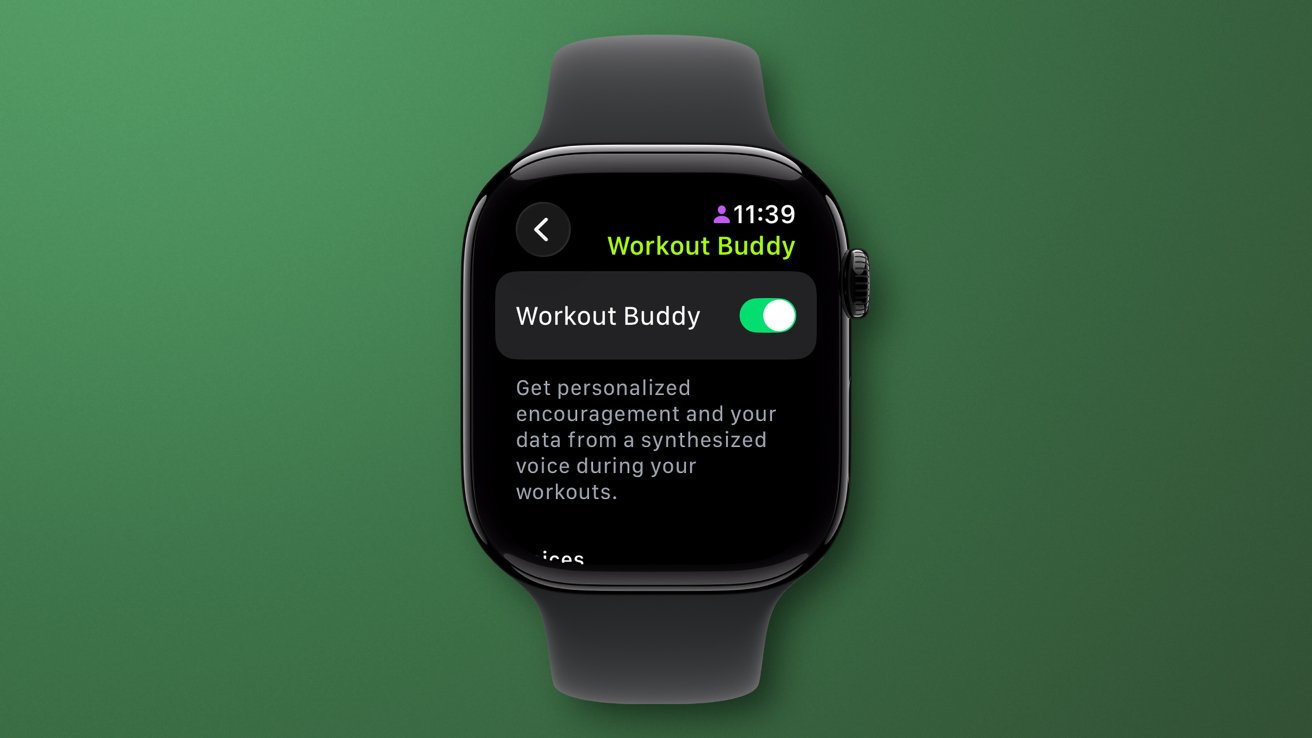



























![Apple Weighs Acquisition of AI Startup Perplexity in Internal Talks [Report]](https://www.iclarified.com/images/news/97674/97674/97674-640.jpg)
![Oakley and Meta Launch Smart Glasses for Athletes With AI, 3K Camera, More [Video]](https://www.iclarified.com/images/news/97665/97665/97665-640.jpg)

![How to Get Your Parents to Buy You a Mac, According to Apple [Video]](https://www.iclarified.com/images/news/97671/97671/97671-640.jpg)





















![New accessibility settings announced for Steam Big Picture Mode and SteamOS [Beta]](https://www.ghacks.net/wp-content/uploads/2025/06/New-accessibility-settings-announced-for-Steam-Big-Picture-Mode-and-SteamOS.jpg)



















